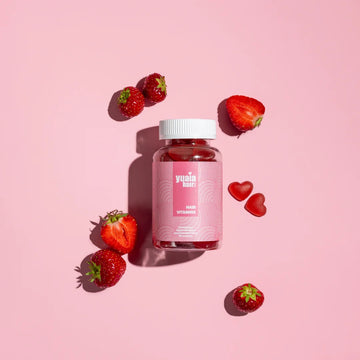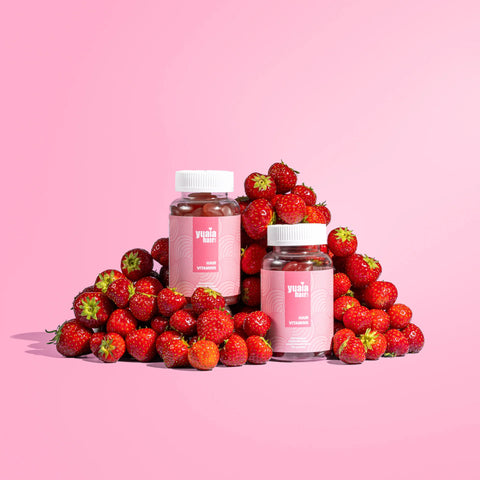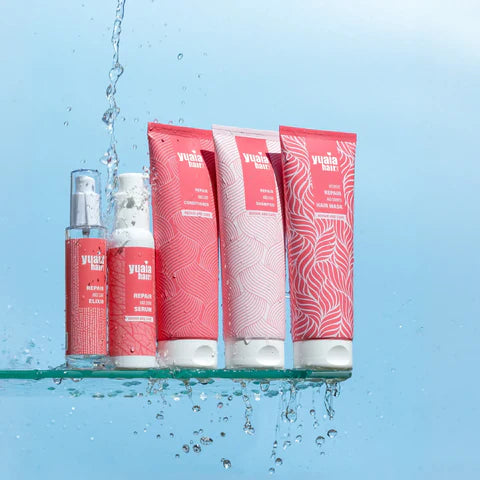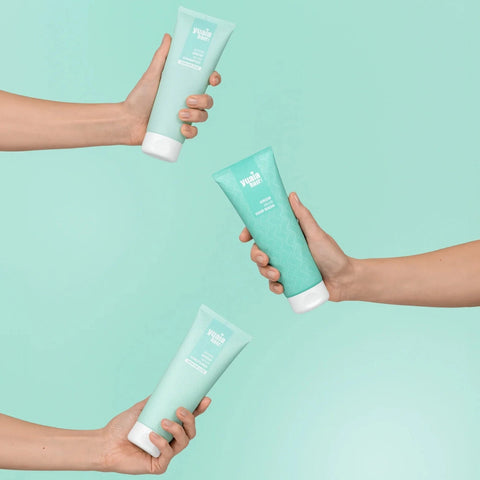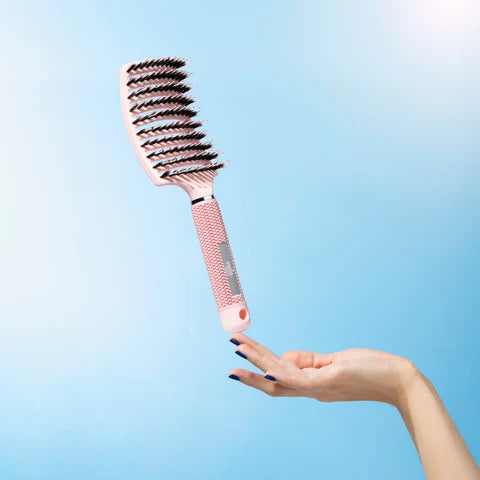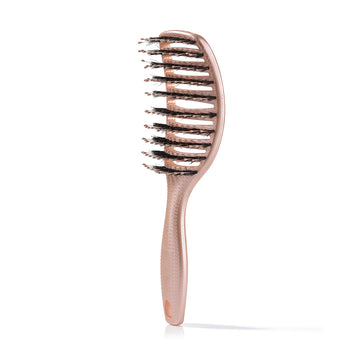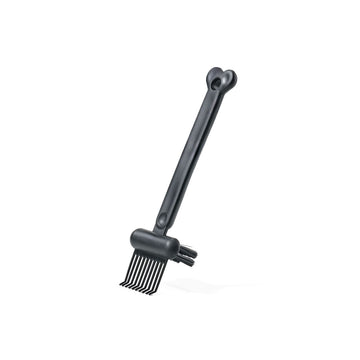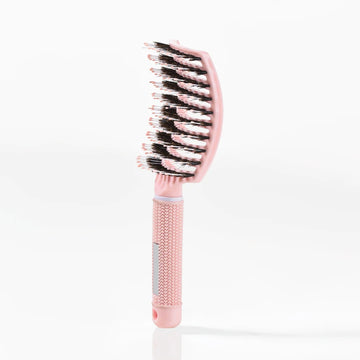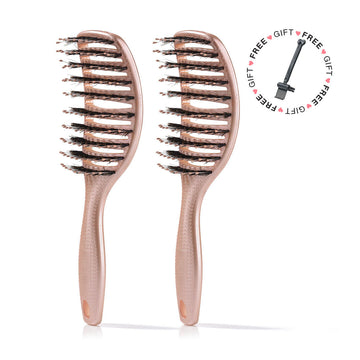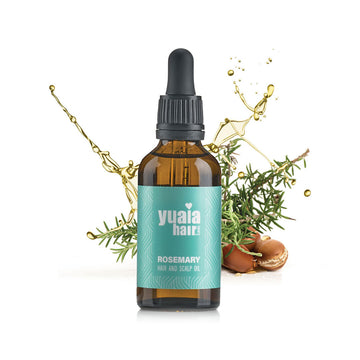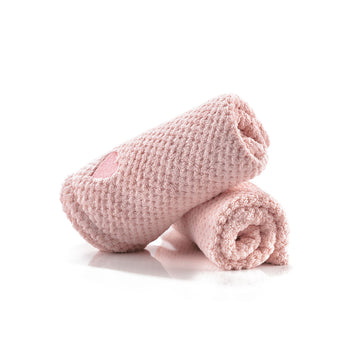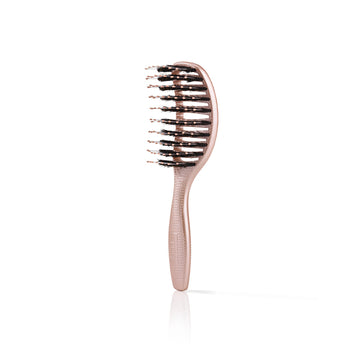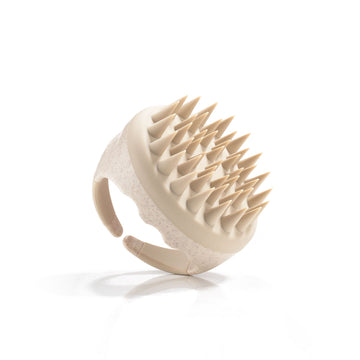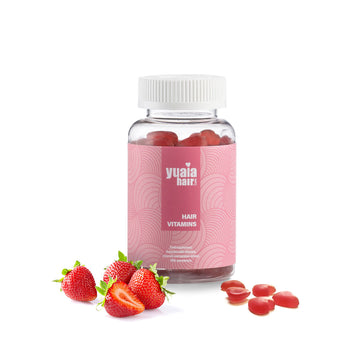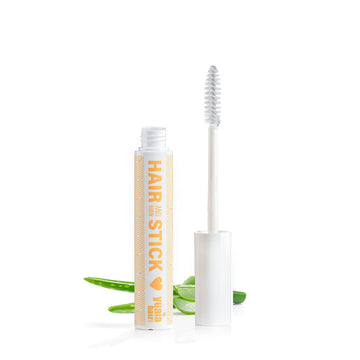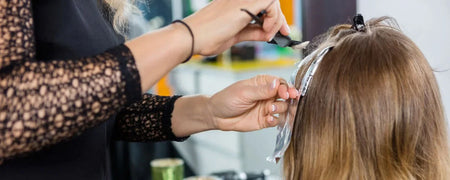
Babylights vs Balayage – What's the Difference?
Excellent Based on 6076 reviews

by Nanna Bundgaard | 10. June 2023 | Reading time: 14 minutes
Read more about the authorBabylights and balayage are two popular hair coloring techniques that can produce different results. While babylights create a more subtle effect with fine, natural highlights, balayage gives a bolder look with darker roots and gradual color transitions. In this blog, we will explore the differences between these two techniques to help you decide which one to choose for your next salon visit. Read on to find out more!
What are Babylights and Balayage?
Babylights and balayage are two different hair techniques that are often confused. Babylights refer to ultra-fine highlights that create a natural lightening effect in the hair. This technique is perfect for those who want a subtle refresh of their look without major changes. The technique involves coloring small sections of hair, resulting in a soft and subtle outcome.
Babylights and balayage are two different hair techniques that can give a natural and soft result to the hair. Babylights use ultra-fine highlights to create a subtle lightening effect, whereas balayage involves a more pronounced coloring technique with a freehand brush or sponge. Both techniques, babylights and balayage, create a modern yet natural style where the dimensions of the hair are highlighted in different ways.
On the other hand, balayage involves a more pronounced coloring technique. Balayage means "to sweep" in French and refers to the technique where the color is applied with a freehand brush or sponge in sections to achieve a gradual transition between the colors. Balayage is ideal for those who want a more sun-kissed effect in their hair, and the result is typically more dramatic than babylights, yet still natural-looking.

Babylights
Babylights are one of the most popular hair color treatments right now, and it’s not hard to see why. Babylights create a natural and subtle look that gives the hair more life without being overwhelming. The babylights technique involves fine strands of color spread throughout the hair, mimicking the way children's hair often looks.
If you want to achieve babylights in your hair, you can follow these steps:
- Use a fine-toothed comb to separate small sections of your hair
- Apply lighter or darker color in small pieces along each section
- Repeat the process until the entire head is covered
When deciding on the right hair color for babylights, you might consider the following options:
- Blondes can choose tones from honey blonde or golden blonde.
- Brunettes or black-haired individuals can try warmer tones such as caramel or copper.
The most important thing when choosing colors is your personal style and skin tone. For the best results with babylights, it is often best to get help from a professional stylist.
While babylights suit many different hair types, this method is not always suitable for everyone – especially if your hair has already undergone a lot of chemical treatment. If your hair has been repeatedly colored, babylights may result in unwanted stripes or even damage your hair.
Balayage
Balayage is a more natural hair coloring style compared to traditional stripes or foil coloring. By painting the color onto the hair instead of using a foil technique, balayage creates a more sun-kissed and subtle look. Balayage allows for the creation of a soft transition between colors that looks as if the hair has been naturally lightened by the sun. The balayage technique can be adapted to both short and long hairstyles and can be used on all hair types and lengths, but it works especially well on long hair. Long hair provides the stylist with greater freedom to create depth and dimension with balayage, allowing for a rich and vibrant result.
Although balayage can provide a beautiful result, you need to be careful when getting it done. Since the technique involves freehand painting of color, it requires experience and expertise from the stylist to achieve the desired results. This means that not all stylists necessarily have the skills required to properly execute balayage. If you're considering balayage, it's essential to choose an experienced stylist, as precision is key to achieving the perfect look. If you are unsure whether balayage will work for your hair type or want a more natural look, the combination of balayage and babylights might be the perfect solution! This combination provides a subtle lightening of the hair while maintaining the natural texture and beauty that many seek.

Difference between Babylights and Balayage
Babylights and balayage are two different techniques in hair coloring. Babylights are fine, thin streaks of lighter color placed around the face and the top of the head, creating a gentle and discreet expression that gives the hair a sun-kissed glance. Balayage uses a freehand technique to apply the color to selected parts of the hair for a more natural look, where the color melts with the hair's natural shadows and highlights the lengths. Both techniques, babylights and balayage, are popular choices for creating modern and dimensional colors, but they achieve it in different ways. Babylights are ideal for those who want a subtle refresh, while balayage is better suited for those who want a more pronounced and contrasting color.
The difference between the two techniques also lies in the color effects. Babylights provide a more subtle effect with only a few shades lighter than the natural hair color, while balayage can create deeper contrasts between the dark base color and the light ends or tops. Therefore, the choice depends on your desired style and maintenance needs.
The techniques
Babylights and balayage are two different techniques that hairdressers use to create beautiful colors in the hair. Babylights are thin and fine stripes made by coloring small sections of the hair. This technique is perfect for those who want a gentle and discreet refresh of their look. Balayage, on the other hand, is a freehand technique where the color is applied in a naturally falling pattern for a more sun-kissed look. This technique is ideal for those who want a natural transition between different tones in the hair, giving a relaxed and elegant expression.
Hairdressers perform these techniques with great care and precision. For example, babylights require an extra fine brush to paint the small sections of hair with the desired hue. Since babylights are so fine, it can take longer to apply, but the result is always worth the wait. With balayage, the hairdresser must have the ability to choose the right place for the color and blend it correctly based on the customer's wishes. Balayage requires both creativity and technical skill to ensure the color is distributed harmoniously in the hair.
For Babylights:
- Thin and fine stripes
- Color small sections depilated
For Balayage:
- A freehand technique
- Applied in a natural decaying pattern
How the techniques are performed by hairdressers:
- Babylights: Performed with finesse using a fine brush to paint the small sections of hair with the preferred shade.
- Balayage: Requires the ability to adapt color to the shape and shades of the hair it is applied to by having the knowledge to mix the correct color based on the customer's requirements and preferences. It requires both experience and an eye for detail.
The color effects
Babylights and balayage are two different techniques that can create beautiful color effects in the hair. Babylights add subtle tones that give dimension to lighter hues. This technique is especially popular among those who want a natural refresh of their hair color without drastic changes. Babylights are ideal for people with lighter hair color or those who want to lighten their hair gradually. The effect is gentle and light-reflecting, making the hair look naturally sun-kissed.
Balayage creates a soft transition between colors for a more natural look. This technique is versatile and can be used to create anything from subtle highlights to more pronounced contrasts. This makes it suitable for both light and darker tones due to its versatility in color composition. Balayage is perfect for those who want a low-maintenance look, as the natural transitions require fewer touch-ups. The most important thing with both techniques is to choose the right hair color to achieve the best result.
When choosing between babylights and balayage, you should also consider your skin tone and face shape. Your face shape can affect how the colors are placed to highlight your best features. A professional hairdresser can guide you in choosing the right technique as well as the optimal placement of the color on your hair.
Always remember to consult a professional before deciding on any hair coloring technique – this ensures the best results without unnecessary risks!
What to choose – Babylights or Balayage?
Babylights and balayage are both popular hair coloring techniques, but they have different purposes. Babylights are for those who want a more subtle look with fine highlights in the hair. This technique creates a soft and natural expression that can lighten the hair without creating too much contrast. On the other hand, if you want a more dramatic effect, balayage is used to create a more pronounced contrast between lighter and darker colors in the hair. Balayage is perfect for those who want a sun-kissed and vibrant look with greater color depth. The choice between babylights and balayage, therefore, depends on the style you wish to achieve.
If you have short hair or want to give your hair a more natural appearance, babylights would be the best choice. This technique works best on shorter lengths where subtle stripes can add texture. If you want a dramatic change and pronounced color contrasts in your hair, you should choose the balayage technique. However, it is always important to consider maintenance and price in the long run before making a decision about which technique suits your needs best.
Hair length
Short hair is best suited for babylights as it can give a more subtle look. Babylights can highlight the structure of short hairstyles and add light and life without overwhelming the hair. When it comes to hair length, it plays an important role in the choice of technique. Long hair can accommodate both babylights and balayage but requires more maintenance with the balayage technique. Long hair provides greater opportunities for creative color effects, but it requires regular refreshing to maintain the sun-kissed look. If you have mid-length hair, it is ideal for both techniques – so it ultimately comes down to your personal preference and lifestyle. Regardless of your hair length, both babylights and balayage can be adjusted to your needs. By consulting a professional hairdresser, you can get tailored recommendations based on your wishes and needs, as well as how your hair length affects the result.
Hair color
Babylights are best suited for lighter hair colors as the technique creates small, fine highlights in the hair. This technique mimics natural sunlight and gives a fresh, light effect that can make the hair look softer and healthier. This method can especially highlight natural tones in blonde hair and give a gentle refresh to your hair color. For those with darker hair, babylights can still be used to add lighter tones and create more dimension in the hair without being too pronounced. Balayage, on the other hand, works well on both light and dark shades and provides more contrast in color than babylights. Whether your hair color is light or dark, balayage can be adapted to create the desired effect. Balayage allows for greater color transitions, adding depth and creating a more dramatic look. Babylights, however, can also create deeper dimension in darker hair colors by adding subtle reflections of light.
The choice of technique depends on your hair color and desired result – both babylights and balayage can be adapted to any hair color, depending on what you want to achieve. In general, the choice between babylights and balayage depends on the desired effect and personal style.
Maintenance
Balayage and babylights are two popular hair color techniques that create a natural look with subtle color nuances. Maintenance of these techniques can vary as they require different treatments to maintain the desired result.
- Balayage requires less maintenance than babylights, as it is a more natural growth.
- Babylights must be recolored more frequently to maintain the desired effect.
- "Root smudging" can help stretch outgrowths between visits to the hairdresser for both techniques.
To ensure the longest possible durability of both balayage and babylights, it is always recommended:
- Avoid heat styling tools such as straighteners or blow dryers as much as possible
- Protect hair from sunlight by using hats or hair products with UV protection
With regular maintenance, your hair will continue to look healthy and beautiful for a long time after your hairdressing treatment.
We can highly recommend our Repair and Care Shampoo and Conditioner to you who use either Babylights or Balayage. The products are ultra moisturising, caring and help to rebuild the hair strands. You can find the package where you save 12% right here .
Price
Both balayage and babylights vary in price depending on the salon and the region you live in. Different factors such as hair length and the complexity of your hair color can also affect the price. For instance, long or thick hair will often cost more as it requires more time and product. Balayage takes longer to complete than babylights, which means the price is often a bit higher than for babylights. Besides the technique, "maintenance" also plays a role in the price. Maintenance visits can vary, but typically, balayage requires fewer touch-ups than babylights. Remember, the overall price over time can increase, as the more frequent salon visits, the higher the overall price in the long run.
Hairdresser's advice
Cindy Chrost - is a hairdresser and owner of Chrost Studio. She specialises in balayage, reverse balayage, bridal, and styling. See her instagram here.

When is babylights a good idea for a customer? versus balayage.
- Babylights is a colour technique where many thin and fine reflections are made. This gives a super nice 'blend' and looks very natural. Babylights are for those who want to go significantly lighter, as you can become relatively light in one go. Babylights are most often done with bleach to lighten the hair. But it is also possible to do it with colour - a mixture of the two will often create a more natural look. If you want an even more natural look, a balayage would be ideal. Here, the natural colour is used at the bottom, meaning there is no sharp growth.
What does a typical babylights treatment cost?
- The price depends on the salon, but is usually somewhere between 135 EUR to 270 EUR, depending on the length of your hair. I would recommend getting a glossing treatment along with your babylights - this gives shine and shimmer and refreshes the colour. This costs an additional 40 to 80 euros.
What should customers be aware of if they want babylights?
- In general, when colouring hair, you have to remember that hair colour is a chemical. Chemicals are hard on the hair - especially bleaching. That's why it's incredibly important to prioritise hair care in your routine.
When you bleach your hair, you remove the good stuff in your hair - for example proteins. Therefore, I recommend using shampoos, conditioners and treatments that contain proteins. These are often the series called 'Repair'. A little life hack: Every other time you need to refresh your babylights, skip the nape of the neck. Only apply babylights over your parting on top. This way, some of the hair gets a break and only the most visible hair is coloured.
Conclusion
When comparing babylights and balayage, it’s essential to note the differences in the techniques. Babylights involve fine streaks of lighter color throughout the head, while balayage uses a more freehand technique to apply color to the desired areas. Both techniques can be adapted to different hair types and hair colors, making them versatile choices depending on the look you want.
To choose the best technique for your hair type and desires, it’s important to talk to your hairdresser about your preferences. Your natural hair color, hair length, and desired maintenance play a big role in the decision between babylights and balayage. The hairdresser can help you make a decision based on factors such as length, thickness, and natural hair color. Be sure to also discuss the maintenance of your new style to ensure that your balayage or babylights stay beautiful over time.
Get a 10% discount code sent to you
Receive the best tips and tricks for your hair from Lotte and Nanna 🥰
Related Articles
 2-4 day UK delivery
2-4 day UK delivery
 25.000+ satisfied customers
25.000+ satisfied customers
 Satisfaction Guarantee
Satisfaction Guarantee

